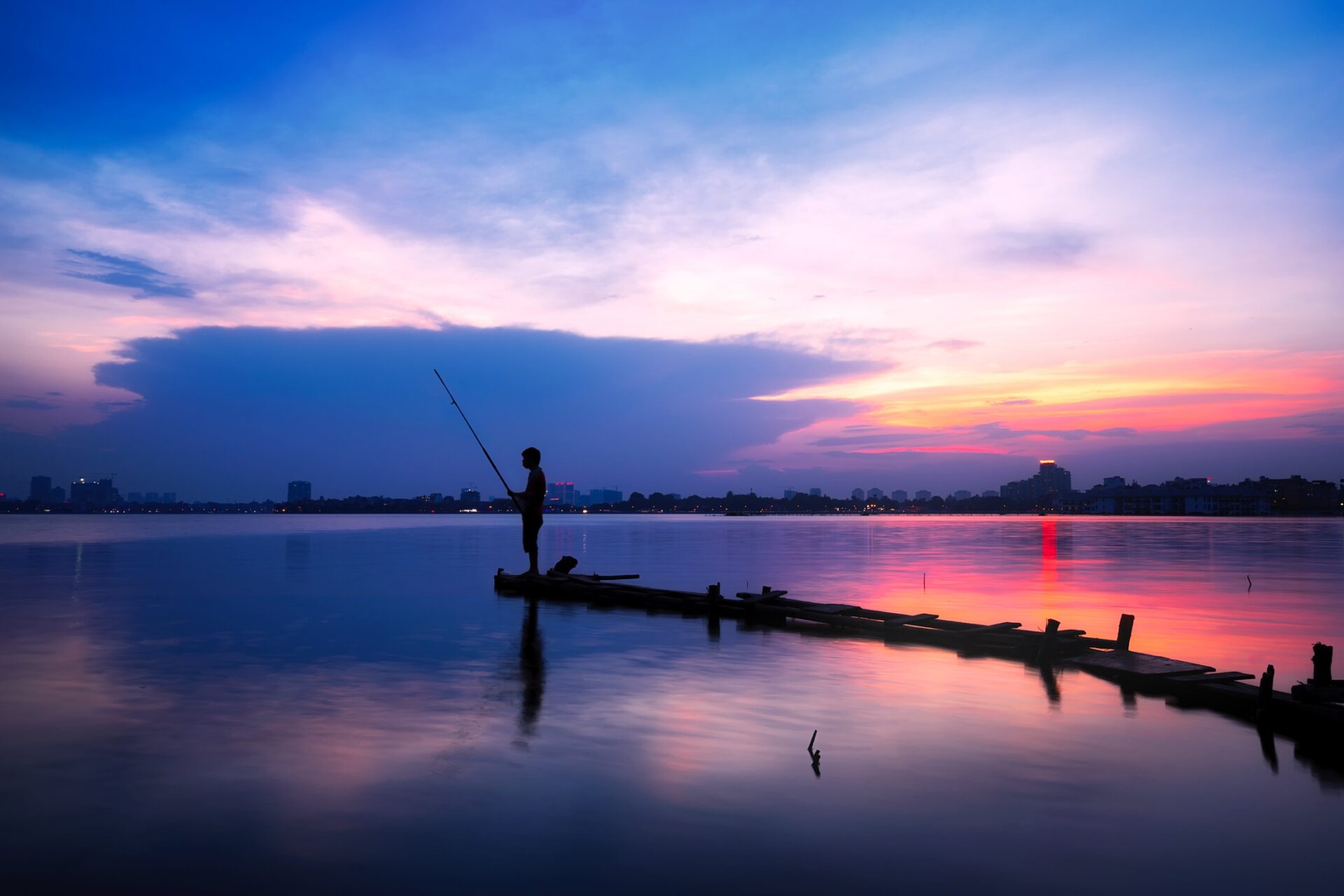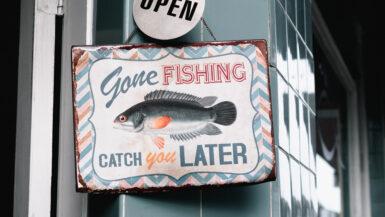When it comes to fishing, trout is one of the most sought-after species. This colorful and delicious fish can be found in stillwater ponds and lakes all over North America. If you’re looking to switch up your fishing routine and try your hand at catching trout, you’ve come to the right place. In this article, we’ll go over all you need to know about trout fishing in stillwater ponds and lakes. We’ll discuss the different types of trout you might find, gear to consider, and the best techniques for landing this species. So, grab your fishing gear and give our tips a try — you’re sure to have a successful and satisfying day fishing for trout.
What Gear Do You Need for Trout Fishing?
If you’re planning to fish for trout in stillwater ponds and lakes, you’ll need to have the right gear with you. Without the right equipment, you won’t have much luck catching trout in stillwater environments. With that said, here’s a look at the essential gear you’ll need to properly fish for trout in stillwaters.
Fishing Rod, Reel, and Line for Trout
The rod and reel you’ll need for trout fishing should depend on the size of the trout you’re targeting. For larger trout that are usually found in lakes, you may want to use a light-medium spinning rod and reel. Balanced with 4 to 8-pound test line, this setup allows you to cast farther, while providing enough backbone to fight large trout. For smaller trout found in ponds, lighter tackle with 2 to 4-pound test line would be more ideal.
Trout Fishing Lures and Baits
Small lures and baits are usually great for catching trout in stillwater ponds and lakes. Popular trout lures include spinners, spoons, and small crankbaits. Some anglers even use small flies and popping bugs. For bait, worms, salmon eggs, and marshmallows are all good choices.
Additional Gear for Trout Fishing
In addition to the necessary rods, reels, lures, and baits, there are a few other items you might want to bring with you when trout fishing in stillwater ponds and lakes. A pair of polarized sunglasses will help reduce the glare from the sun and allow you to spot trout in the water more easily. To store your fishing gear and protect it from the elements, a good tackle box or bag is a must. A portable aerator can also be very handy when fishing in stillwaters, as it helps to keep your bait alive and active.
Trout fishing in stillwaters can be a fun and rewarding experience, but it’s important to make sure you have the right gear. With the right rods, reels, lures, and baits, you’ll have a much better chance of catching trout in stillwater ponds and lakes!
Where to Find Trout in Stillwater Ponds and Lakes
Finding the perfect spot for trout fishing in a stillwater pond or lake can be a daunting task. But with the right planning and knowledge of the local environment, you can increase your chances of finding and catching trout. Knowing which areas of the stillwater bodies hold the highest concentrations of trout can make all the difference in a successful fishing trip.
Identifying Trout-Friendly Areas
When identifying trout fishing spots, it is important to look for areas that provide natural hiding spots and areas with ample food sources. Trout prefer habitats with rocky, shallow shorelines and areas with plenty of aquatic vegetation, such as weeds and algae. Trout will stay in the deeper portions of a stillwater pond or lake, as they prefer cooler waters and environments with plenty of cover. If possible, try to locate spots where the water is not too deep, as trout prefer shallow water when feeding.
Sources of Bait, Lures, and Other Fishing Equipment
Trout can be caught with a variety of bait, lures, and other fishing equipment. Traditional bait such as worms, maggots, and insects work well when fishing for trout in a stillwater pond or lake. Additionally, artificial lures, such as spinners, spoons, plugs, and jigs, can often produce good catches. As trout are generally not very active, it is important to use a light spinning rod or fly-fishing rod when fishing for them. For fly-fishing, a 6-9 weight rod is usually recommended.
Access to Trout Fishing Spots
When looking for trout fishing spots in stillwater ponds and lakes, it is important to ensure that public access is available. Knowing the local regulations and obtaining the proper permits, if necessary, can help ensure a successful trout fishing trip. Additionally, try to limit the amount of noise and activity near the trout-friendly areas to reduce spooking the fish.
Conclusion
By following the tips outlined above, you will be able to identify and access the best spots for trout fishing in stillwater ponds and lakes. Remember to utilize bait, lures, and other fishing equipment tailored for trout and to respect local access regulations. With the right knowledge and preparation, you can have a successful and enjoyable trout fishing experience in stillwater ponds and lakes.
Preparing the Line for Trout Fishing
Fishing for trout in stillwater ponds and lakes requires some basic equipment. Before you head out for your fishing trip, make sure you have the following:
- Fishing rod, either spinning or fly-fishing
- Fishing line and appropriate lures or bait
- Can of worms, if using bait
- Net, if needed
- Fishing license, if required
Choosing the Proper Fishing Line for Trout
When trout fishing, you want to choose a fishing line that is strong, durable, and abrasion resistant. If you are using a spinning rod, you should opt for a monofilament line. Monofilament line is the most common type of fishing line and is strong yet flexible. For fly-fishing, you should choose a floating line that is designed for trout fishing.
Securing the Fishing Line to the Reel
Once you have chosen the appropriate fishing line for trout, it’s time to secure it to the reel. To do this, start by threading the line through the eyelets on the rod. You then tie the end of the line to the reel spool using a clinch knot. Make sure the knot is tight and secure before you begin fishing.
Attaching the Lure or Bait
Once the fishing line is securely attached to the rod and reel, you can now attach the lure or bait. If using a lure, simply tie the lure to the end of the fishing line using a clinch knot. If you are using bait, thread a small piece of worm onto the hook. Make sure the hook is secure, as you don’t want it to come off while fishing.
Casting the Line for Trout Fishing
Once you have the line and lure ready, it’s time to begin casting. When trout fishing, you want to cast the line upstream, so that the current carries the lure past the trout. This will help attract the fish and you will have a better chance of reeling it in. Make sure you don’t put too much force into the cast, as this could scare away the trout.
Best Baits for Fishing for Trout
When it comes to fishing for trout in stillwater ponds and lakes, bait is key. There are many types of bait you can use when fishing for trout, from worms, to minnows, to spinners, to flies. Each type of bait has its own pros and cons. Here are some of the most popular baits for trout fishing:
Worms
Worms are one of the most popular baits for trout fishing. Worms are easy to obtain and they appeal to trout because they are a natural food source. In addition, worms are relatively cheap and they stay on the hook well. However, they can be difficult to keep alive unless you keep them in damp, cool conditions.
Minnows
Minnows are a great bait for trout fishing because they are a natural food source for trout, and they will often attract bigger trout. Minnows are easy to keep alive as long as they are kept in cool and well-aerated water. They are often pricier than other baits, but they are well worth the money.
Spinners
Spinners are a popular bait for trout fishing due to their bright colors and flashy appearance. Spinners are especially effective for catching larger trout, since their bright colors will stand out in any stillwater pond or lake. Additionally, spinners are relatively affordable and easy to keep on the hook.
Flies
Flies are also a great bait for trout fishing. Flies are a natural food source for trout, and they can entice even the pickiest of trout. In addition, flies are lightweight and easy to keep on the hook and they float on the surface of the water, making them very visible to trout. However, flies can be quite expensive and they usually require a bit of practice to master.
No matter what type of bait you choose, it’s important to remember that when fishing for trout in stillwater ponds and lakes, the most important factor is to match the size and color of the bait to the size and color of the trout you are targeting. By choosing the appropriate bait for the type of trout you are targeting, you will maximize your chances of catching trout.
Techniques for Fishing for Trout in Stillwater Ponds and Lakes
When it comes to fishing for trout in stillwater ponds and lakes, the choice of bait can have a big impact on the success of your fishing trip. Popular choices of bait include salmon eggs, worms, small minnows, and various types of artificial lures. Artificial lures can be especially effective, as they can be used to imitate a variety of aquatic insects and other prey items that trout feed on. If you are using live bait, it is best to hook the bait so that it is just off the bottom of the lake or pond, and gently jig it.
Presenting Your Bait for Trout Fishing
Presentation is another important factor when it comes to fishing for trout in stillwater ponds and lakes. When using either live bait or artificial lures, it is important to make sure that you are presenting them properly. If using live bait, it is best to cast it close to structure such as fallen logs, rocks, and weeds, where the trout are likely to be hiding. For artificial lures, it is best to cast them close to the same types of structure and retrieve them at a slow and steady pace.
Best Fishing Techniques for Trout in Stillwaters
The best techniques for trout fishing in stillwaters typically involve a combination of methods. Some anglers will prefer to use spinning gear and artificial lures, while others may opt for a fly rod and different types of flies. Spinning tackle is great for covering more water, while a fly rod can be used for more delicate presentations. If using flies, the best approach is to often imitate an aquatic insect, such as an emerging mayfly or stonefly, and float it slowly on the surface of the water.
Tips for Finding and Catching Trout in Stillwater Ponds and Lakes
When it comes to fishing for trout in stillwater ponds and lakes, it is important to know where to find the trout. Look for areas of the lake or pond that have structure such as fallen logs, rocks, weeds, deep holes, or any other type of structure that provides a hiding place for the trout. It is also important to approach the lake or pond slowly and quietly, especially when using a fly rod, as the trout are easily spooked. Finally, be sure to use the right size of hook and bait, as small hooks and baits will be more appealing to the trout.
Tips for Catching Trout in Stillwater Ponds and Lakes
When it comes to trout fishing in stillwater ponds and lakes, the right bait is key. In these kinds of environments, trout usually feed on the bottom and the best bait is something they can find there. Bait fish, worms, meal worms and salmon eggs are just a few of the things that can be used when fishing for trout in stillwater bodies of water.
Choose a Location for Trout Fishing
In most stillwater bodies of water, there are certain spots where the trout are more likely to be located. Look for spots where there is little current, near areas with plentiful vegetation, or in deep spots. If a pond or lake has areas where the water is fairly shallow, avoid those areas as trout may not frequent them.
Consider the Weather When Trout Fishing
When fishing for trout in stillwater ponds and lakes, the weather can have a drastic impact on your success. Trout tend to be most active in the warmer months of the year. In the colder months, they may remain deep in the depths of the lake or pond. Consider the temperature of the air and water when it comes to trout fishing.
Know the Species of Trout Being Caught
When trout fishing in stillwater bodies of water, it’s important to understand the species of trout you’re going after. Different species of trout prefer different kinds of bait, so be sure to understand which species you’re after so you can use the most effective bait.
Consider the Depth of the Water When Trout Fishing
In stillwaters, trout tend to stay in the deeper sections. Consider the depth of the water when trout fishing in order to make sure you’re targeting the fish in the right areas. Deep-diving crankbaits, or weighted lines and lures, can be effective ways to target trout in deeper sections of a pond or lake.
Keep Your Fishing Line Visible When Trout Fishing
In stillwater environments, visibility can be key when trout fishing. Make sure your line is set up so that it’s visible to the trout. Use fluorescent line if possible, as this will make your line more visible in the water. Additionally, bright colored lures with flashy components can help to attract the attention of the trout in the area.
Change Your Techniques When Trout Fishing in Stillwater Environments
It’s important to keep in mind that when trout fishing in stillwater environments, traditional trolling and casting methods may not be as effective. Trout in these environments tend to stay in one spot, so it’s important to use different techniques to target them. Long pauses and slow retrieves can be effective when fishing for trout in stillwater ponds and lakes.
Successful Trout Fishing Tips
Trout fishing in stillwater ponds and lakes requires specialized techniques and knowledge to be successful. Using the right tackle, bait and lures, as well as knowing what type of trout to look for in different areas, can make a huge difference in the results of your fishing adventure. When selecting a spot, try to focus on areas with deeper water and lots of vegetation, as this will usually provide more and bigger fish. The right bait and lures can be difficult to determine, so research what types of trout are in the area, to help you choose the best option. Also, be sure to use light tackle and a very slow approach, as this will give you a better chance at catching more and bigger fish. With the right combination of knowledge, technique and practice, you can have a successful trout fishing trip in stillwater ponds and lakes.





Leave a reply